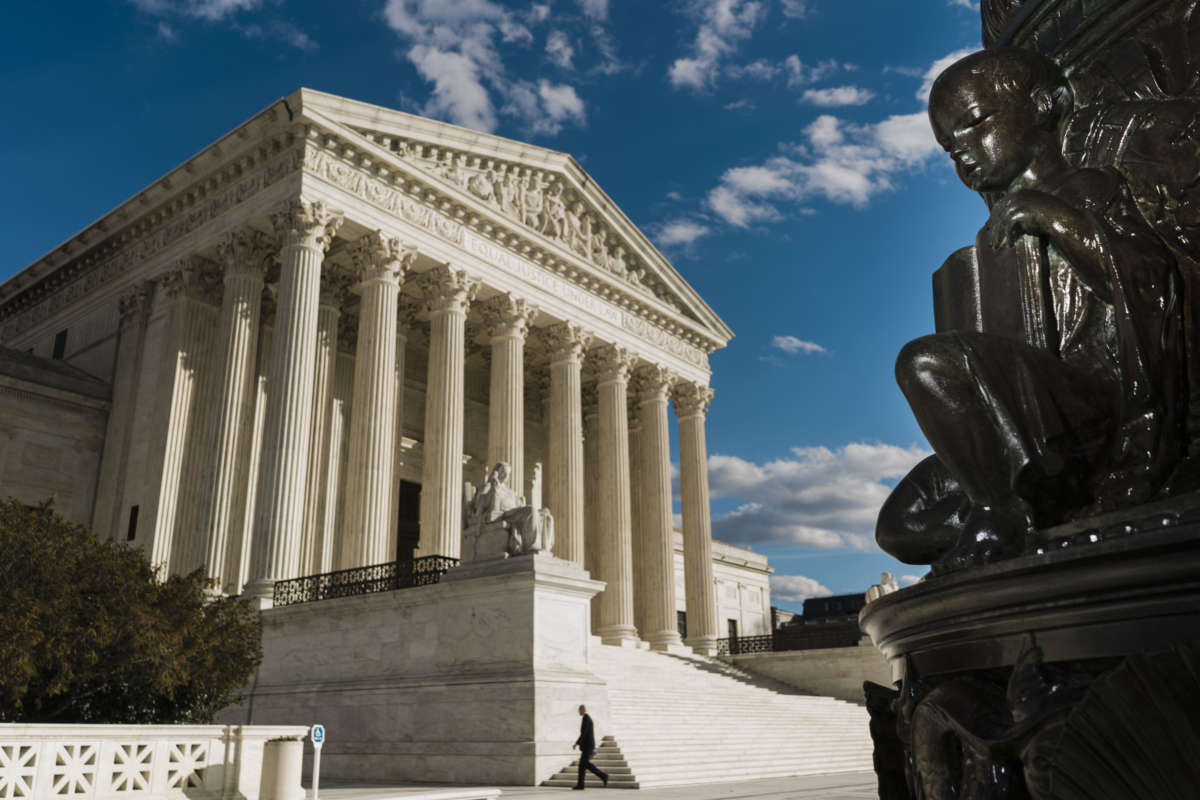The U.S. Supreme Court’s order allowing Alabama to use a congressional map that critics say disadvantages Black voters has voting rights advocates worried — and understandably so.
On the surface, the stay issued Feb. 7, 2022, in Merrill v. Milligan was procedural. In a 5-4 decision, the justices halted a district court’s injunction that had barred Alabama from using a newly redistricted map in the upcoming 2022 elections. The Supreme Court will hear the full case in its next term starting in the fall, with the ruling due by the end of June 2023 — after this year’s midterm elections.
Had it stood, the district court’s injunction would have required Alabama to redraw congressional districts ahead of the election to give Black voters greater representation. Instead, Black voters — more than a quarter of Alabama’s electorate — will be the majority in just one of seven districts.
The Supreme Court’s order could have a significant, substantive effect on the 2022 midterm elections — and not just in Alabama. In allowing the state to use a voting map adopted in late 2021 that a court has ruled unlawful soon after passage, the Supreme Court is sending a signal to other states regarding the lack of review available regarding problematic maps they may draw.
Expanding Purcell
The justices’ decision rests on the Purcell principle — a rule the Supreme Court created in 2006 when vacating a Court of Appeals decision to block Arizona’s voter ID law a month before the upcoming general election.
In their ruling in the case Purcell v. Gonzalez, justices said federal courts should not interfere with state election processes close to a general election because doing so would confuse voters and burden election officials.
The latest ruling by the Supreme Court in Merrill appears to expand the scope of the Purcell rule significantly.
The Merrill ruling does not appear to track Purcell. The district court’s injunction in Merrill was the result of a full review of Alabama’s congressional redistricting plan. The district court heard seven days of testimony and read a substantial volume of briefings before reaching its decision.
At the conclusion of the case — handled at warp speed for a federal court — the district court wrote an opinion of more than 200 pages explaining in detail the law and facts underlying its decision.
Moreover, the injunction against Alabama’s redistricting plan was issued on Jan. 24, 2022 — more than nine months before voting in Alabama’s general election ends on Nov. 8, 2022.
In contrast, the Court of Appeals in Purcell had enjoined the use of the Arizona voter ID law without explanation mere weeks before that year’s general election.
Novel Reading of the Voting Rights Act
This apparent expansion of the Purcell principle is more than just a technical change. It could have a tangible impact on the election results in Alabama.
At the heart of the case is a dispute over whether Alabama must redraw its congressional districts to provide a second seat in which Black voters form the majority. The current map contains one such district.
That issue reaches the heart of the 1965’s Voting Rights Act and could affect Black Alabamians’ ability to elect their representatives of choice.
In Justice Brett Kavanaugh’s concurrence with the court’s order, joined by Justice Samuel Alito, he suggested the stay of the injunction stopping Alabama from using its map is sensible, in part, because the plaintiffs are not clearly going to win the underlying case when it comes before the Court.
Justice John Roberts dissented from the stay, noting the district court appears to have applied the law correctly and left nothing for the Supreme Court to correct.
Meanwhile, Justice Elena Kagan’s dissent — which was joined by Justices Stephen Breyer and Sonia Sotomayor — argued the underlying merits in the challenge to Alabama appear so clear that the Court’s majority would need to employ a novel reading of the Voting Rights Act to make the case appear debatable.
Tilting Elections
The court’s order in Merrill suggests that the window for deciding the legality of redistricting measures before the 2022 elections has now closed.
That likely sends a message to all states — those that have not finished redistricting and those that may wish to revise their redistricted maps — that they can pass whatever maps they want, possibly tilting the 2022 congressional election, without fear of being overruled in federal court.![]()
This article is republished from The Conversation under a Creative Commons license. Read the original article.
Media that fights fascism
Truthout is funded almost entirely by readers — that’s why we can speak truth to power and cut against the mainstream narrative. But independent journalists at Truthout face mounting political repression under Trump.
We rely on your support to survive McCarthyist censorship. Please make a tax-deductible one-time or monthly donation.
